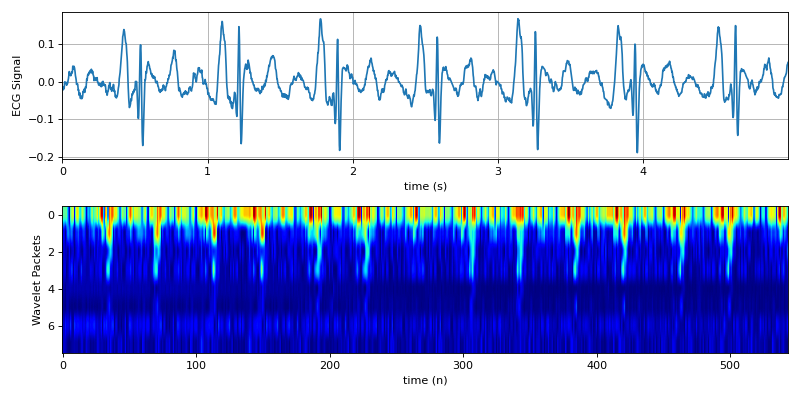spkit.wpa_coeff_win¶
- spkit.wpa_coeff_win(x, winsize=128, overlap=None, wv='db3', mode='symmetric', maxlevel=None, verticle_stacked=True, pad=False, verbose=0)¶
Wavelet Packet Decomposition - window-wise
Wavelet Packet Decomposition - for each window and stacked together
- Parameters:
- x: 1d signal array
- wvwavelet type, default = ‘db3’
- winsize: int, default=128
window size, samples at the end will be discarded, if len(x)%overlap is not eqaul to 0, to avoid, pad the signal
- overlap: int, default=None,
if None, overlap= winsize//2
shift of window
- mode: {‘symmetric’, ..}, default=’symmetric’
- maxlevel: int, or None, default=None
maximum levels of decomposition will result in 2**maxlevel packets
- verticle_stacked: bool, default=True
if True, coefficients are vertically stacked - good for temporal alignment
- pad: bool, default=False,
if True, signal will be padded with last value to make len(x)%overlap==0
- verbose: bool, deault=False
Verbosity mode
- Returns:
- WK_seq: 2D array, (N,K),
N = 2**maxlevel, number of packets
K, number of coefficients in each packet
See also
Notes
wpa_coeff_winimproves the time resolution of the WPA, compared towpa_coefffor long sequenceReferences
Examples
#sp.wpa_coeff_win import numpy as np import matplotlib.pyplot as plt import spkit as sp x,fs,lead_names = sp.data.ecg_sample_12leads(sample=2) x = x[:int(fs*5),5] x = sp.filterDC_sGolay(x, window_length=fs//3+1) t = np.arange(len(x))/fs WK = sp.wpa_coeff_win(x,wv='db3',winsize=512,overlap=256,mode='symmetric',maxlevel=3, verticle_stacked=True,pad=False) plt.figure(figsize=(10,5)) plt.subplot(211) plt.plot(t,x) plt.xlim([t[0],t[-1]]) plt.xlabel('time (s)') plt.ylabel('ECG Signal') plt.grid() plt.subplot(212) plt.imshow(np.log(np.abs(WK)+0.01),aspect='auto',cmap='jet',) plt.ylabel('Wavelet Packets') plt.xlabel('time (n)') plt.tight_layout() plt.show()






